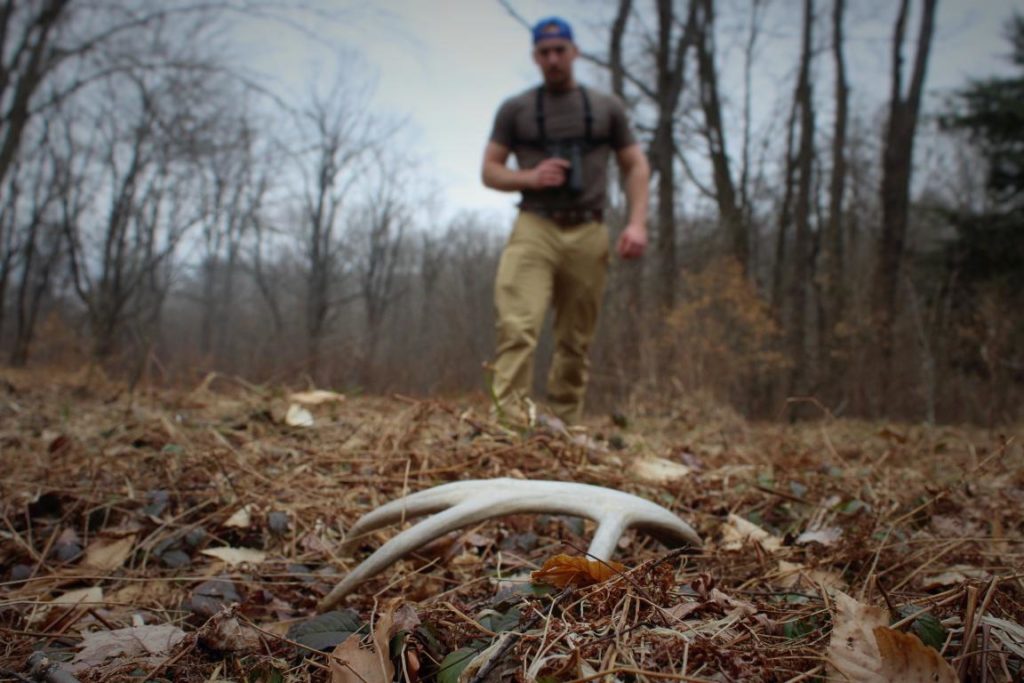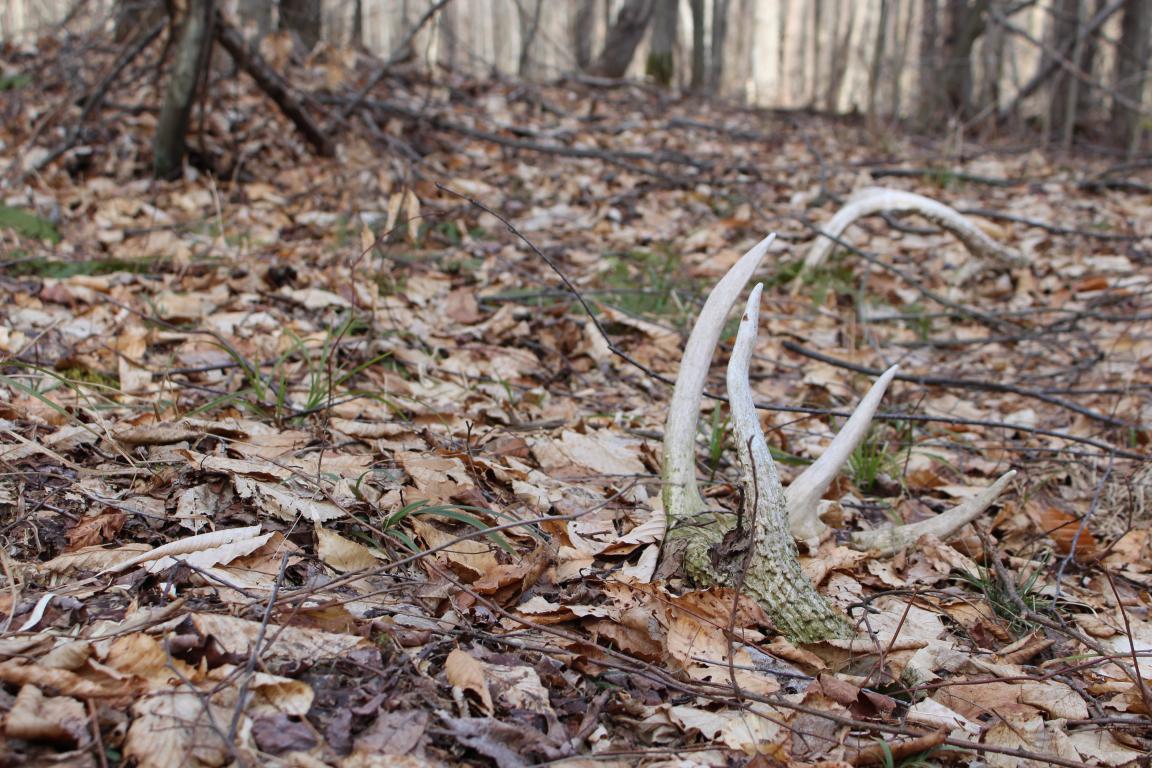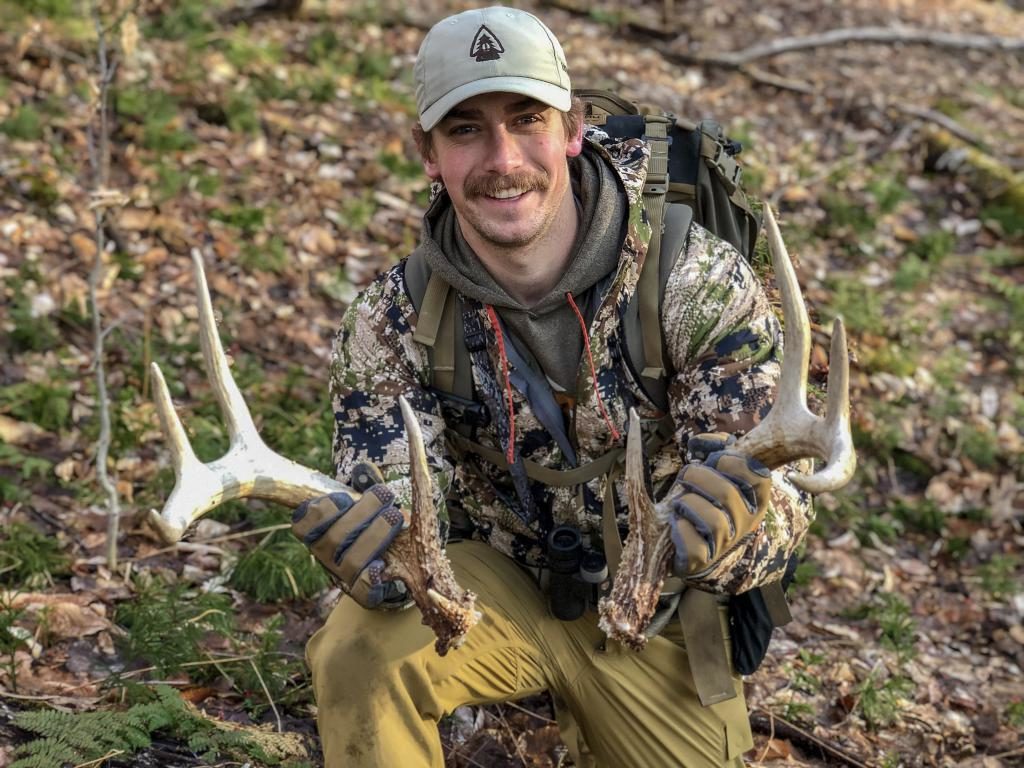Shed Hunting for Mountain Bucks
Every year as hunting season dissipates and the winter months set in, I get a little bit of cabin fever. Luckily for me and other hunters, the spring months can be an exciting time to get out into the Pennsylvania Wilds and burn some rubber off the boots. Throughout the winter, whitetail bucks will shed their antlers, which biologists have found to be correlated to a loss in testosterone. Typically, bucks will shed in January and February, but I’ve seen them shed as early as late November and as late as the end of April. From late February through April, looking for shed antlers is something I look forward to every year.

Finding shed antlers is much more difficult in the big woods, Appalachian region of Pennsylvania than most places in the country. Finding sheds in this region is so difficult due to the miles upon miles of unbroken timber. There are no agricultural fields and food plots that make up a buck’s primary food source. With that being said, it’s not only more rewarding, but you get to roam in some of the most beautiful places that the east has to offer in the process. I’m not going to lie and say it’s just putting on miles for piles of antlers, because it is kind of like finding a needle in a haystack, or at least that’s how it feels some days. I use shed hunting to scout for the upcoming deer season, as well. All of last year’s signs, including scrapes and rubs, are easily visible after the snow melts, as if they have just happened. I use the onX Hunt app on my phone to mark this critical deer sign and add it to my game plan for the fall archery season.
All right, so I just made you think that it’s basically impossible to find shed antlers on public land in the PA Wilds, right? Well, there are some things that you can focus on that will help increase those odds for success!

Focus Areas
It can be daunting to look at a map and see how much area there is to cover. Where do you even begin? I start by looking at areas where the deer are going to spend most of their time.
- Food Sources – Deer need to eat, right? Especially in the winter months, they need ample amounts of food to stay warm. In the big woods, there are generally not many food plots or crop fields, so the focus changes to natural food sources. Although the deer feed just about anywhere in the forest, looking for areas with a good acorn crop still on the ground can be a good starting point. Mature oak ridges can provide a good acorn crop. In addition, logging cuts can be a great place for deer to feed. Newer cuts seem to be better in the winter months, but all logging cuts provide food sources for the deer. These include blackberry briars, tops of trees that were cut and left there, ferns, and other plants.
- Bedding Areas – Deer spend a great part of their day lying in their beds to rest, and if we are playing a game of odds here, then it sounds like a good bet to check these areas out. In steep terrain with a lot of topography, bucks will tend to bed on points of ridges just over the edge from the top, but if the winter was rough, they can drop in elevation. As mentioned in the food sources above, logging cuts also provide great bedding. It might be the tree top that they tuck in up against, a lone hemlock tree or the edge of an old clearcut peering out into the open hardwoods. See a trend here with logging cuts? Big woods deer have some of the most unpredictable bedding compared to their farm country counterparts, but it’s not impossible to figure out.
- Finding Signs – I tend to define a specific area and walk it until I find a location where deer seem to be spending a lot of time. If I start to see a bunch of digging, then that’s a good area to “grid search” or cover the ground thoroughly looking for the glimpse of an antler.

Shed hunting can be a great way to get exercise, scout for the upcoming season, and spend time with your friends and family, while hopefully coming home with some antlers. Your dog will really like you if you bring them one, as well! The biggest takeaways from this are: focus on the areas that have signs and be as efficient and thorough as possible. Remember, if you take it all in and pay attention to all of the details and deer signs, even if you don’t find any shed antlers, you’ve learned something that can be applied at a later date.


